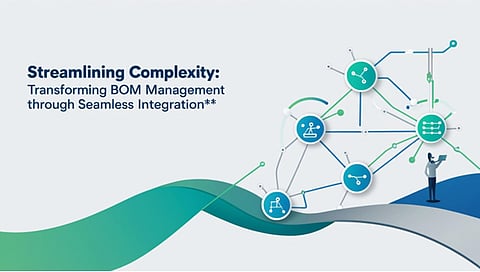Streamlining Complexity: Transforming BOM Management Through Seamless Integration
With a deep focus on enterprise digital transformation, this article explores innovations in systems integration and process optimization. Pradeep Karanam, brings extensive experience in aligning technical architecture with organizational workflows. His expertise lies in streamlining engineering and supply chain systems for improved efficiency. Passionate about bridging operational gaps, he emphasizes scalable and sustainable solutions. Through structured methodologies, he enables organizations to adopt unified digital frameworks. His insights draw from both practical implementation and research-driven strategies.
Reimagining Engineering and Manufacturing Synergy
The modern manufacturing landscape demands swift product development and impeccable quality, yet data fragmentation often stalls progress. One of the most pressing challenges lies in the synchronization of design and supply chain systems, particularly around the management of Bills of Materials (BOM). In environments dealing with massive component volumes and diverse toolsets, inefficiencies stemming from redundant data entry, manual mapping, and inconsistent data structures are common. These gaps not only inflate production timelines but also undercut quality assurance and cost-effectiveness. Without a unified data model, even minor engineering changes can cascade into major delays. Streamlined BOM integration is no longer a luxury; it is essential for competitive advantage.
Laying the Foundation with a Unified Architecture
At the heart of the transformation lies the establishment of a centralized digital architecture that serves as the single source of truth for BOM data. By utilizing a structured integration methodology and a refined data model, the new system bridges previously disconnected domains of engineering and manufacturing. This centralization enables seamless synchronization of product views ranging from engineering and manufacturing to maintenance thereby streamlining lifecycle management.
An iterative action-research approach underpinned the system’s evolution, allowing for continuous refinement based on real-time feedback. Emphasis on both technology and organizational workflows ensured robust adoption and minimized disruptions during the transition.
Engineering Integration with Strategic Precision
The integration framework constructed for this transformation took cues from proven enterprise system principles. Key elements included mechanisms for change management, standardized data exchange, and lifecycle consistency. This vertical and horizontal integration ensured that updates to engineering designs were accurately and automatically reflected across procurement, production, and compliance systems.
Dedicated system components managed interrelationships between data sets across the product lifecycle. This reduced the overhead of managing duplicate data structures and eliminated the silos that previously hindered collaboration and responsiveness.
Tangible Gains from Unified Execution
The measurable benefits of this approach were profound. Using validated performance measurement frameworks, improvements were recorded across quality, cost, delivery, and flexibility dimensions. Data accuracy increased, process throughput improved, and time spent on error resolution was significantly reduced.
Operational outcomes were further reinforced by qualitative gains. Enhanced cross-functional collaboration, streamlined supply chain engagement, and elevated compliance management were among the standout achievements. These benefits reflect not only the strength of the technology but also the effectiveness of stakeholder engagement strategies.
Behind the Curtain: What Drove Success
Critical to the project’s success were several foundational enablers. System architecture and technical infrastructure were thoughtfully selected and configured to support scalability and reliability. Performance optimization played a vital role, with deliberate planning around network capacity and database performance ensuring responsiveness.
Organizational dynamics also proved crucial. Executive sponsorship ensured alignment and momentum, while a well-structured implementation team blending business acumen with technical proficiency facilitated smooth execution. Communication and training strategies empowered users, fostering confidence in adopting the new processes and systems.
Navigating Obstacles with Methodical Solutions
No transformation journey is without its hurdles. From integrating legacy systems to managing diverse user expectations, the project encountered a host of technical and organizational challenges. Addressing infrastructure gaps, ensuring secure data exchange, and optimizing for performance under high operational loads were among the chief technical concerns.
Organizationally, resistance to change and workforce skill gaps posed initial obstacles. These were mitigated through structured training programs and stakeholder communication plans. Clear process documentation and active feedback channels further supported users during the transition.
A Blueprint for Scalable Transformation
Ultimately, this initiative offers a roadmap for modern manufacturers grappling with fragmented data environments. It demonstrates that successful transformation hinges not just on technological innovation but on holistic planning that integrates people, processes, and performance metrics into a cohesive change model.
In conclusion, the seamless implementation of the unified BOM management system underscores the need for enterprises to prioritize integration, not as a one-time solution but as a continual evolution aligned with strategic goals. As Pradeep Karanam aptly concludes, real transformation occurs when technology and organizational readiness move in tandem unlocking operational excellence and future-proofing enterprise workflows.
.png)

